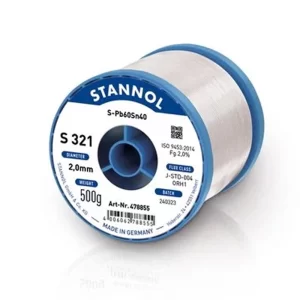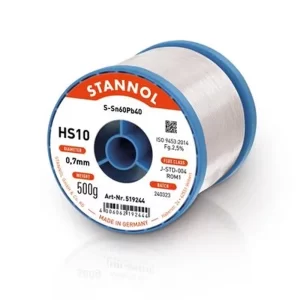Leaded Soldering Wires
Soldering wire is a fusible alloy, typically of tin and silver or lead, that has been extruded into an easily handled form. Shaping solder into wire allows it to be wound on a spool for easy storage and unwound for use as necessary. Some soldering wire is a solid alloy, while other varieties comes with a flux core. Soldering wire can be made of many different compounds, and some alloys are more useful than others for particular jobs. Various tin and lead alloys were historically used for applications such as electronics and plumbing, though lead may be replaced by metals such as silver and antimony for health or environmental concerns.
Types of soldering wire are typically differentiated by their thicknesses and the metals they are made of. Solder is basically metal wire with a “low” melting point, where low for our purposes means low enough to be melted with a soldering iron. For electronics, it is traditionally a mix of tin and lead. Tin has a lower melting point than Lead, so more Tin means a lower melting point. Most common lead-based solder you’ll find at the gadget store will be 60Sn/40Pb (for 60% tin, 40% lead). There’s some other minor variations you’re likely to see, such as 63Sn/37Pb, but for general hobbyist purposes I have used 60/40 for years with no issue.
Showing all 2 results
-
-
Leaded Soldering Wires
Stannol Solder Wire HS10 2.5%
Select options This product has multiple variants. The options may be chosen on the product page


